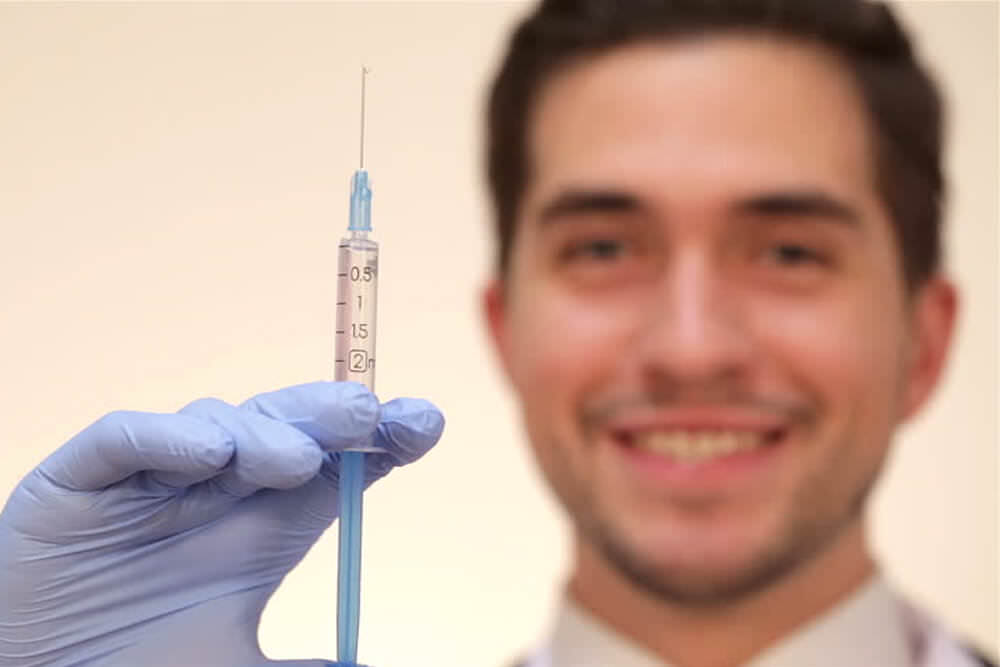Painless PRP injections – How Doctors Minimize any Possible Discomfort

Platelet Rich Plasma (PRP) is a very innovative, minimally invasive therapy. This therapy can bring about amazing therapeutic results and even eliminate the need for surgery. If you’ve been concerned about the discomfort that can arise from the procedure, know that your doctor will use several approaches to minimize it. You can now expect to get almost painless…
Platelet Rich Plasma (PRP) is a very innovative, minimally invasive therapy. This therapy can bring about amazing therapeutic results and even eliminate the need for surgery. If you’ve been concerned about the discomfort that can arise from the procedure, know that your doctor will use several approaches to minimize it. You can now expect to get almost painless PRP injections that are very effective. Since no scalpels and sutures are used, there is no possibility of unsightly scarring either. Here’s how doctors can minimize the pain:
Local Anesthetics for Painless PRP Injections
Typically, doctors use local anesthetics like lidocaine, epinephrine, or ropivacaine to lower the possible pain levels in any kind of procedures. These compounds are administered along with the injection in the treatment site. However, in case of the PRP serum, research has shown that lidocaine and ropivacaine could reduce the effectiveness of the therapy. For this reason, your PRP practitioner is likely to use only epinephrine that will not only result in painless PRP injections but also enhance the concentration of platelets in the serum. Epinephrine can also help reduce bleeding if any.
Using PhotoActivated PRP Injections
By exposing the PRP serum to light at specific spectrums, it is possible to enhance its properties of reducing inflammation and pain. Doctors begin by spinning the blood in the centrifugal machine to extract the plasma. Next, they place the syringe in a special PRP Photo-Activation device. Here the plasma is exposed to light for 10 minutes. The PRP serum contains cytokines, growth factors, and bioactive stem cells that can help create both hard and soft tissue. These natural compounds can also lower tenderness. When the serum receives low-intensity light, it can release beta endorphins that reduce soreness. Further, the anti-inflammatory agents it creates help the swelling go down. The result? Painless PRP injections.
Post-procedure Medications
To further help you with any possible pain after the procedure, your PRP doctor might recommend that you take Tylenol or similar medication for painless PRP injections. However, take care to avoid any drugs like Mobic, Celebrex, Aleve, Motrin, and Naprosyn. These medications induce the swelling and inflammation to go down by restricting the flow of blood to the treatment site. Since the PRP serum works by attracting platelets and growth factors to the site for speedy healing, you absolutely must avoid them a week before and after the procedure.
Using Very Fine Needles
By using extremely fine or small bore needles such as 29 and 30 G, doctors can further reduce the tenderness and possibility of any marks. You can expect that any minimal discomfort from these painless PRP injections will settle within two or three days.
Other Factors that Determine Discomfort Levels
The discomfort and soreness you might experience after taking the PRP injections depends on various factors. These factors can include your tolerance levels and the treatment site. For instance, injections in the knee for osteoarthritis may cause you less pain that the ones in say, the scalp for hair loss issues. The precision with which the treatment is administered can also affect the tenderness. To help give you painless PRP injections, doctors use specialized imaging devices. These devices help them to place the serum in the exact spot for maximum effectiveness. In the case of spinal treatments, x-rays that show continuous images are used. On the other hand, injections for the knee or elbow may need the use of ultrasonic machines.
PRP injections cause far less discomfort as compared to most other invasive treatments and procedures that help you with many of the health and aesthetic issues you have. The soreness you might experience is only likely to last for a couple of days. And, taking regular pain medication can help. Soon afterward, you’ll begin to notice incredible improvements that far outweigh any pain and tenderness. Your PRP doctor is also likely to take the utmost precautions to ensure that you get painless PRP injections.
References:
Impact of local anesthetics and needle calibers used for painless PRP injections on platelet functionality
Choosing a PRP Therapy Doctor